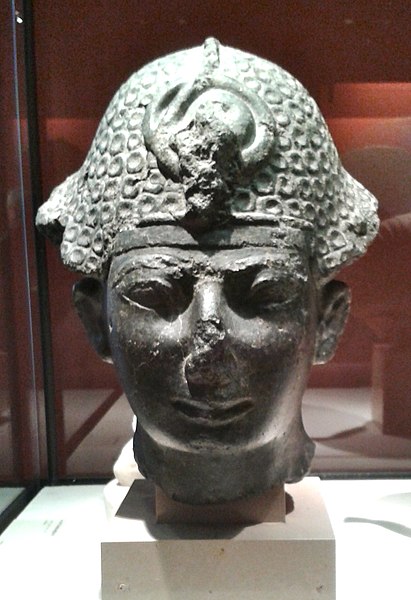Tomb KV43 is the burial place of Thutmose IV, a pharaoh of the Eighteenth Dynasty in the Valley of the Kings in Luxor, Egypt. He was interred with two of his children who predeceased him. The tomb has a dog-leg shape, typical of the layout of early Eighteenth dynasty tombs. KV43 was rediscovered in 1903 by Howard Carter, excavating on behalf of Theodore M. Davis.
Thutmose receives life from, in turn, Osiris, Anubis, and Hathor (wall decoration in KV43)
Large hieratic graffito recording the inspection of the tomb by Maya
Model alabaster vases from one of the foundation deposits
Arm panel from a ceremonial chair of Thutmose IV depicting the king as a sphinx trampling enemies, now in the Metropolitan Museum of Art
Thutmose IV was the 8th Pharaoh of the 18th Dynasty of Egypt, who ruled in approximately the 14th century BC. His prenomen or royal name, Menkheperure, means "Established in forms is Re." He was the son of Amenhotep II and Tiaa.
Head of Thutmose IV wearing the blue crown. 18th Dynasty. State Museum of Egyptian Art, Munich.
Syrian ("Retjenu") tribute bearers in the tomb of Sobekhotep, during the reign of Thutmose IV, Thebes. British Museum
Thutmose IV wearing the khepresh, Musée du Louvre.
Fragment of a crudely carved limestone stela showing king Thutmose IV adoring a goddess (probably Astarte). From Thebes, Egypt. 18th Dynasty. The Petrie Museum of Egyptian Archaeology, London








